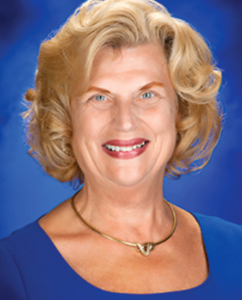
PDPM Article 2: Preparing for the Patient Driven Payment Model In Five Steps
November 10, 2020Get ready for the October implementation date of the Patient Driven Payment Model (PDPM) with our informative series of articles authored by Leah Klusch, RN, BSN, FACHCA, founder and director of The Alliance Training Center. We’ll prepare you for the new reimbursement model with detailed insights in a step-by-step guide to PDPM success. You’ll learn about everything from building staff competencies and improving your coding practices to the value of partners and how to enhance efficiencies. The series will conclude with a checklist to help you gauge your readiness.
With the October 1 implementation date just months away, long-term care organizations need to act quickly to be ready for the Patient Driven Payment Model (PDPM) roll out. As you can imagine with a brand new reimbursement model, much is required in a very short time. Here are the five steps organizations should be doing now to prepare.
1. LEVERAGE STAFF: Some organizations are hiring clinical help to ease the transition, but don’t overlook administrative employees who can play a particularly crucial role in the weeks immediately surrounding the shift to PDPM. Make sure you’re maximizing all available resources in the organization, including consultant pharmacists who can help inform on medication use, standards of treatment, or diagnostic coding that will have an impact on payment.
2. DESIGN COMMUNICATION PROTOCOLS: Due to the enormity of the implications for organizations, there is now an express requirement for true interdisciplinary communication. Therapy alone will no longer drive payment. All departments are on an equal plane so facilities need to establish a structure that solicits everyone’s input to get the right information – sometimes that may mean consulting electronically. And don’t forget that in complicated cases, pharmacists should be part of the dialogue.
3. DEVELOP YOUR KNOWLEDGE BASE: The specificity of clinical information that should be documented to support coding under the new payment system means organizations need to make sure employees understand the instructions for coding accuracy. Train staff thoroughly on how diagnoses and conditions are collected and documented since the admission assessment is everything and can drive payment for a resident’s entire stay. If diagnoses and conditions are not right, a facility may not get paid.
4. GET COMPLIANT: When it comes to education, each facility should have a mandatory compliance-focused process to establish that it provided the right information to those in the organization who need it. After you train employees on MDS coding and validation, make sure you document that training in their employment file. That way, you’ll have a record showing they were given proper direction that you can share with surveyors, if needed.
5. CREATE AN ADMISSION CHECKLIST: There are 128,800 data combinations in the PDPM that can be used to create a payment rate. And there are certain items CMS has identified as moderate to high-cost that are new. Medically complex residents, particularly certain conditions, require that facilities get acceptable diagnoses into the MDS to have an impact on payment. One way to achieve that is to have a checklist at admission for all categories – PT, OT, speech and language, nursing, non-therapy ancillary services – to capture complete patient information that can impact reimbursements.
Success under the PDPM starts with preparation, and it needs to begin now to position your organization to take advantage of the significant reimbursement opportunities this new approach holds.
Download the PDF at the bottom of this page for more information, including the following charts and checklists to help make your PDPM implementation a success.
- NTA Assessment Checklist
- Nursing Classification
- Physical Therapy Case-Mix Indices
- Occupational Therapy Case-Mix Indices
- Speech-Language Pathology Case-Mix Indices


Leah Klusch, RN, BSN, FACHCA,
founder and director of The
Alliance Training Center
